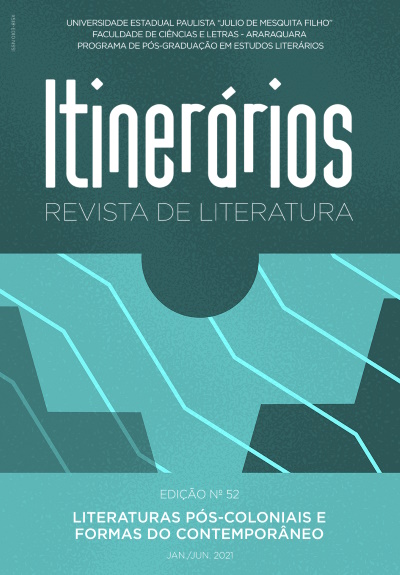The writing as a headstone in The Barefoot Woman by Scholastique Mukasonga
Keywords:
Memory, Denunciation, Preservation, Scholastique Mukasonga, The Barefoot WomanAbstract
The present study proposes an interpretative analysis of Rwandan author Scholastique Mukasonga’ work The Barefoot Woman. This book was originally published in 2008 (La femme aux pieds nus) and launched in Brazil in 2017. The intention is to think about the role of memory in the novel as a denunciation and an instrument of preservation. This work is based on theoretical studies about memory. The analysis finds that, by merging fiction and memory, the memoir narrative of the Rwandan writer Scholastique Mukasonga symbolically configures the tombstone of her deceased mother Stefania and all the others victims of the genocide in Rwanda.
Downloads
Published
Issue
Section
License
Os manuscritos aceitos e publicados são de propriedade da revista Itinerários. É vedada a submissão integral ou parcial do manuscrito a qualquer outro periódico. A responsabilidade do conteúdo dos artigos é exclusiva dos autores. É vedada a tradução para outro idioma sem a autorização escrita do Editor ouvida a Comissão Editorial.

